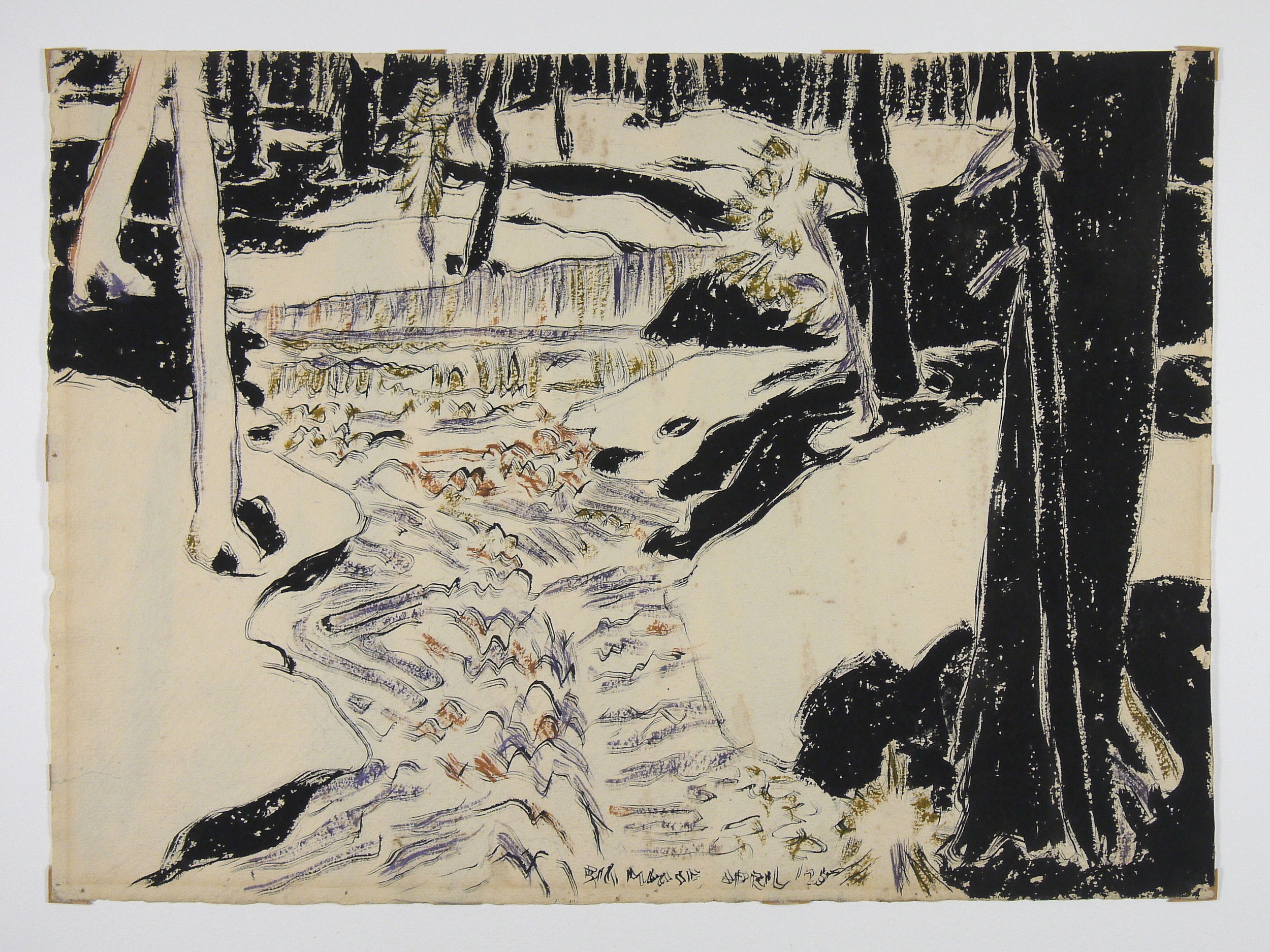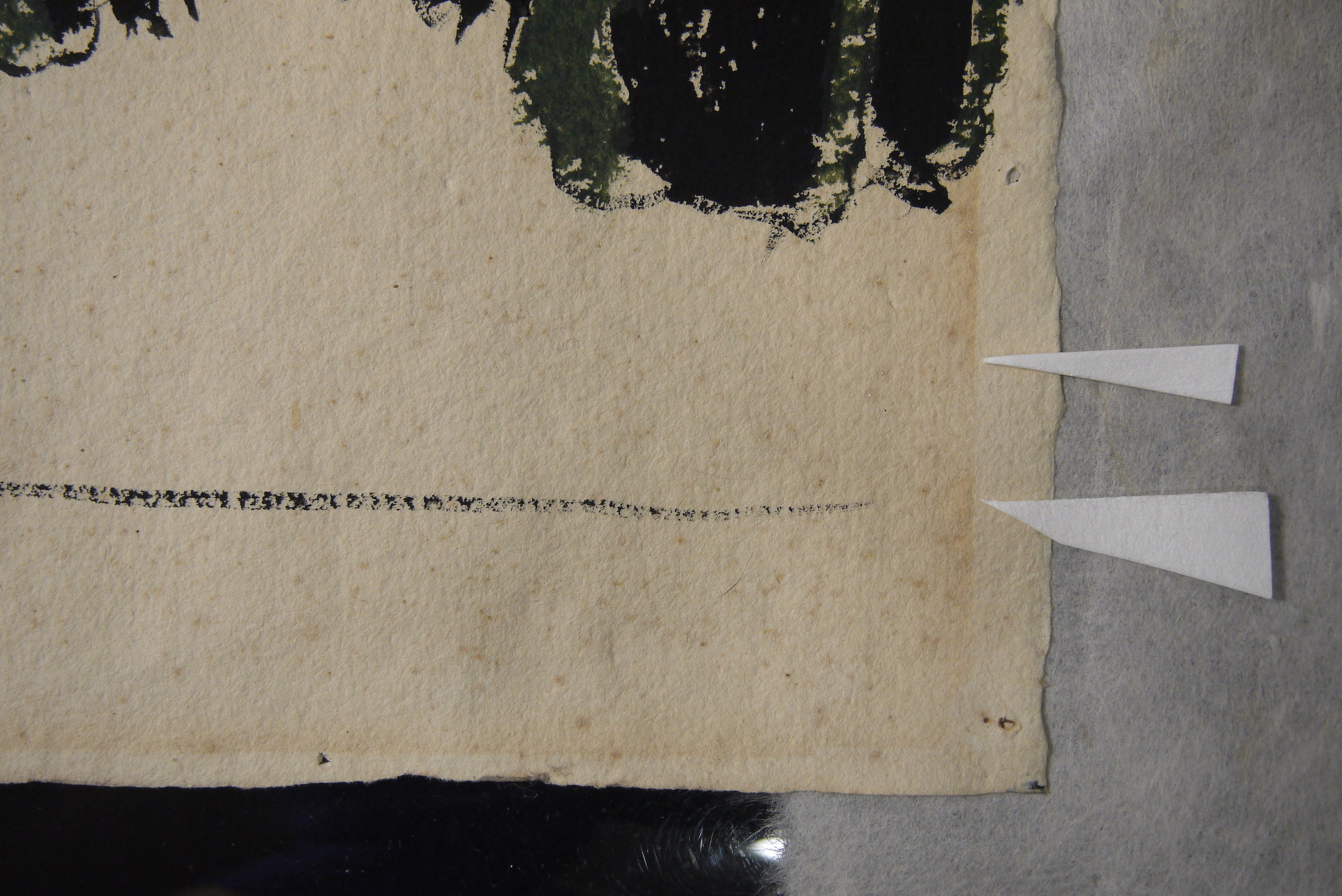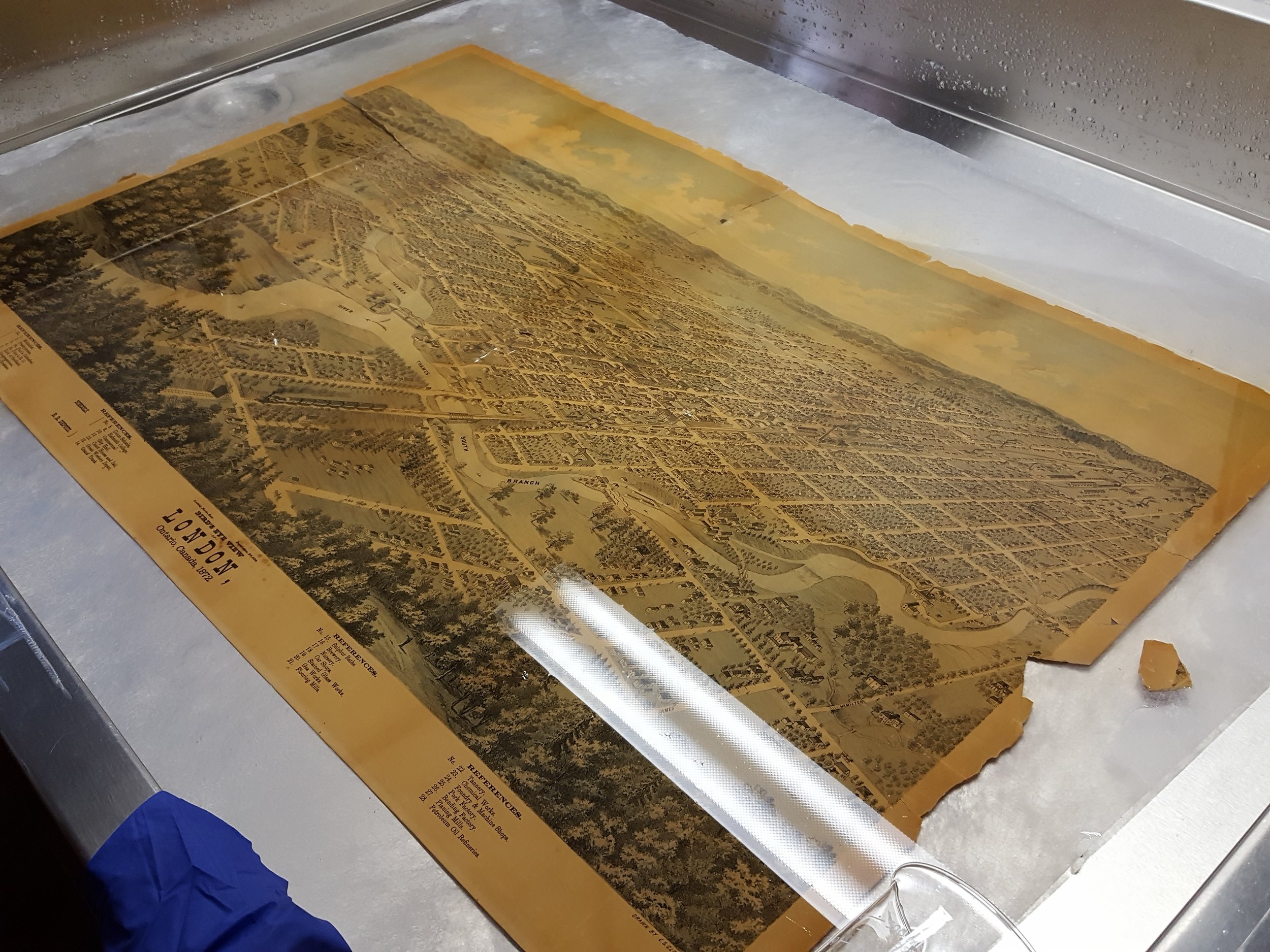David Milne is one of Canada's most iconic artists, and his sparse, evocative style is seen to great advantage in his watercolour paintings. But as with any art on paper, Milne's works are very susceptible to damage and deterioration. Book and Paper Conservation Services recently restored three David Milne watercolours for the Art Gallery of Windsor.
Big Moose, David Milne, watercolour on paper, before conservation treatment. Staining and mat burn disfigure the image.
The three works on paper are part of a bequest given to the Gallery by the Estate of Leslie Stibinger, and had not previously been displayed. Moisture and poor storage conditions before acquisition by the gallery had resulted in mould and mildew stains in the paper, as well as mat burn around the perimeter of all three artworks.
Weed Mines, David Milne, watercolour on paper; before conservation, dramatic staining in the upper right quadrant disfigures the work.
Last Snow of Winter, David Milne, watercolour on paper, before conservation treatment. Mat burn around the perimeter was the worst damage to this piece.
Verso of Last Snow of Winter, showing tape and adhesive residue, before conservation treatment.
The watercolours came to Book and Paper Conservation Services for conservation treatment in the summer of 2017, in advance of the exhibition 'Blazes Along the Trail': Exploring David Milne’s Imaginative Vision, running October 21, 2017 – January 28, 2018. The Gallery was eager to include these three works in the show, but wished to have them restored to their best condition before display.
The stains in white areas of the paper disfigured the images and distracted from the viewers' appreciation of the composition. The mat burn around the perimeters hindered the works from being displayed to their outermost edges, and the remains of acidic tape and adhesive on the reverse of the works were causing long-term deterioration. These issues were addressed during the restoration of the works.
Testing treatment of mat burn on Weed Mines, David Milne.
Stain reduction on Weed Mines, David Milne.
Removal of tape and adhesive residue from verso of artwork.
Cleaning and stain reduction in progress on Weed Mines, David Milne, watercolour on paper.
After extensive testing of the media, paper and stains, a treatment protocol was proposed that included surface cleaning, local stain reduction using chemical bleach, and mechanical removal of the adhesive tape. Over the course of several weeks, the treatments were painstakingly executed to restore the works to Milne's original vision.
Weed Mines, David Milne, watercolour on paper; stained area before and after conservation.
Big Moose, David Milne; staining before and after conservation treatment.
The three watercolours have been stabilized and preserved, and now that they are back in the care of the Art Gallery of Windsor, they will remain safe for future generations to enjoy. These works, along with a number of other paintings and prints by Milne, are on display in the exhibition 'Blazes Along the Trail': Exploring David Milne’s Imaginative Vision until January 28, 2018.
Weed Mines, David Milne, watercolour on paper; after conservation treatment. The staining across upper area of image has been dramatically reduced, restoring the integrity of the artwork.
Big Moose, David Milne, watercolour on paper; conservation treatment has reduced stains so they no longer detract from the image.
If you would like to read more about Milne's art, the AGW's collection, and the conservation treatment of these watercolours, you can access a free e-publication produced by the Gallery to accompany the exhibition, available on their website. Book and Paper Conservation Services was pleased to contribute an essay on our work conserving the Milne watercolours.
Last Snow of Winter, David Milne, watercolour on paper; after conservation, mat burn has been eliminated so the image can be viewed out to the perimeter.
We are happy to work with both public institutions and private collectors to preserve important cultural objects for the future. View our fine art conservation portfolio to see other projects completed at the studio, and contact us anytime to enquire about restoration of works on paper in your own collection.

























